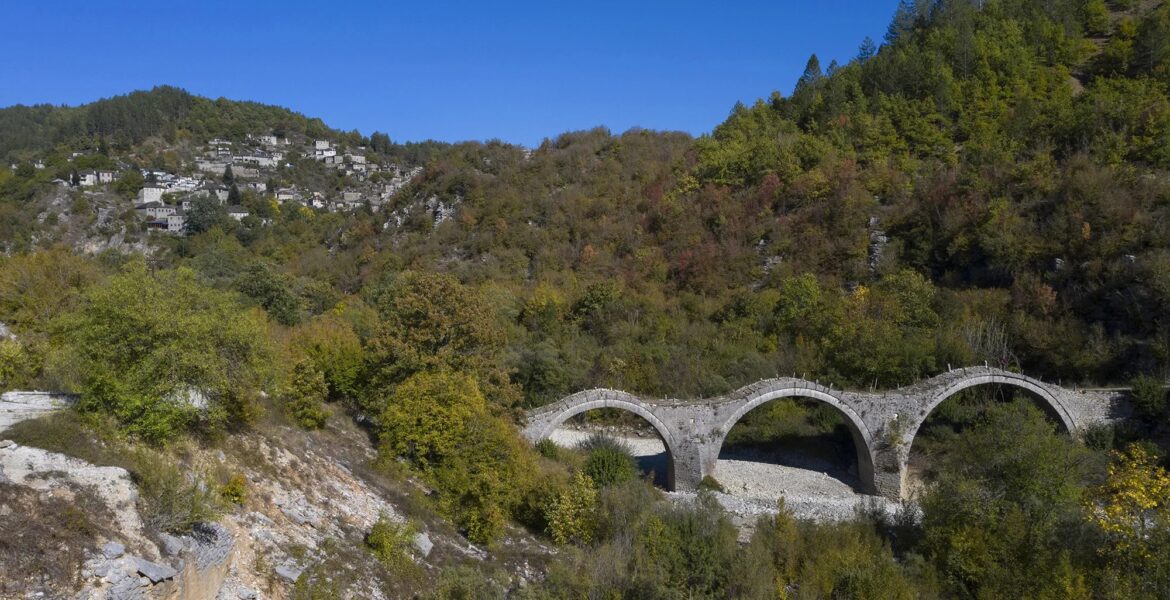Zagori deservedly joined the UNESCO World Heritage List in 2023, making it the first Greek monument or site not from the ancient or Eastern Roman (Byzantine) era on the list.
The main reason for this recognition is undoubtedly the craftsmanship and architecture of Epirus. Craftsmen and artisans from this region have travelled throughout Greece, building houses, churches and infrastructure that are still widely admired today.
Perhaps the signature of 19th-century Epirote architecture is the stone bridges, and most exemplary of all is the bridge near the village of Kipoi. It’s the Kalogeriko or Plakidas Bridge, which spans the Voidomatis River.
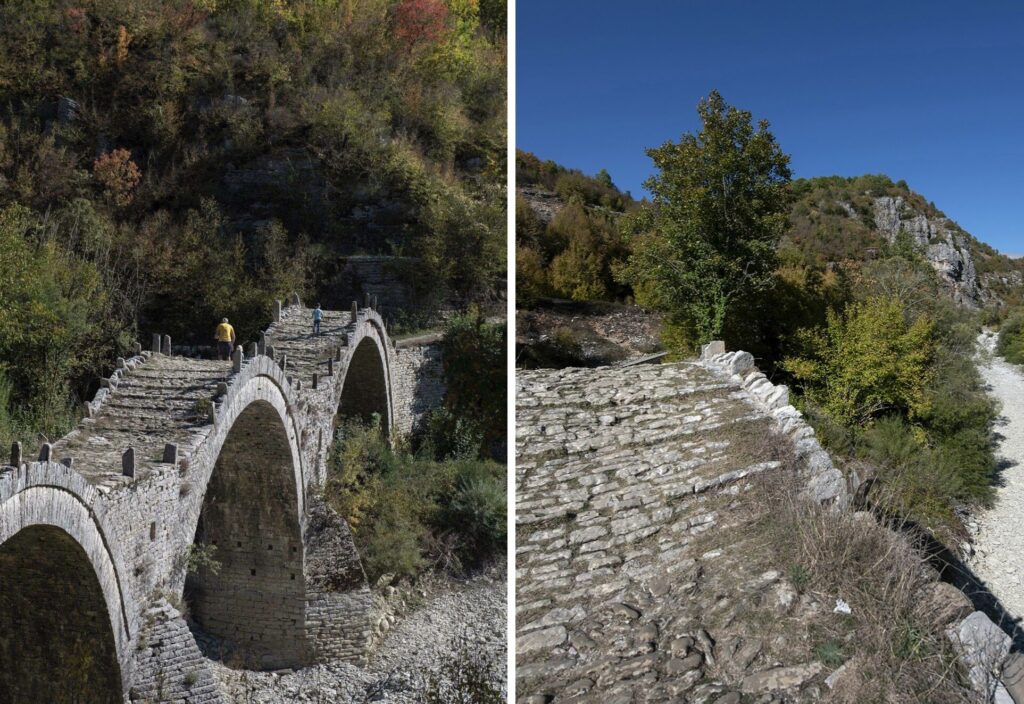
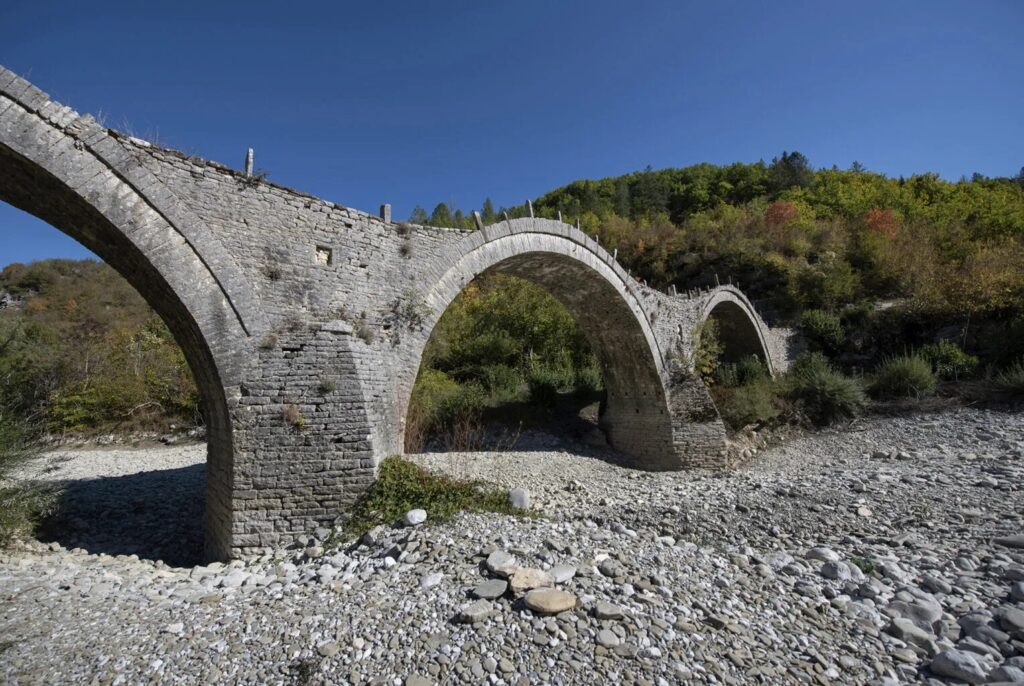
In 1814, Abbot Seraphim of the Monastery of Prophet Elias in Vitsa decided to replace an old wooden bridge with a stone one that connected to a nearby mill – hence the name Kalogeriko. What makes this structure unique are its three arches, the tallest of which is over 6.5 metres, while the bridge spans an impressive 56 metres.
In excellent condition and easily accessible, it’s a perfect spot for a family visit.
The shape of the bridge’s arches stretching across the river has earned it the nickname “caterpillar in motion”. The name “Plakidas Bridge” came about half a century after its construction, named after the people who repaired it.
In 1865, Kipoi locals Alexios and Andreas Plakidas spent 400 florins, or 21,000 groschen, to repair it, and the bridge has borne their name ever since. In August 2018, the Service for Modern Monuments and Technical Works of Epirus, Northern Ionian and Western Macedonia, repaired one of the bridge’s bases, from which stones had come loose.
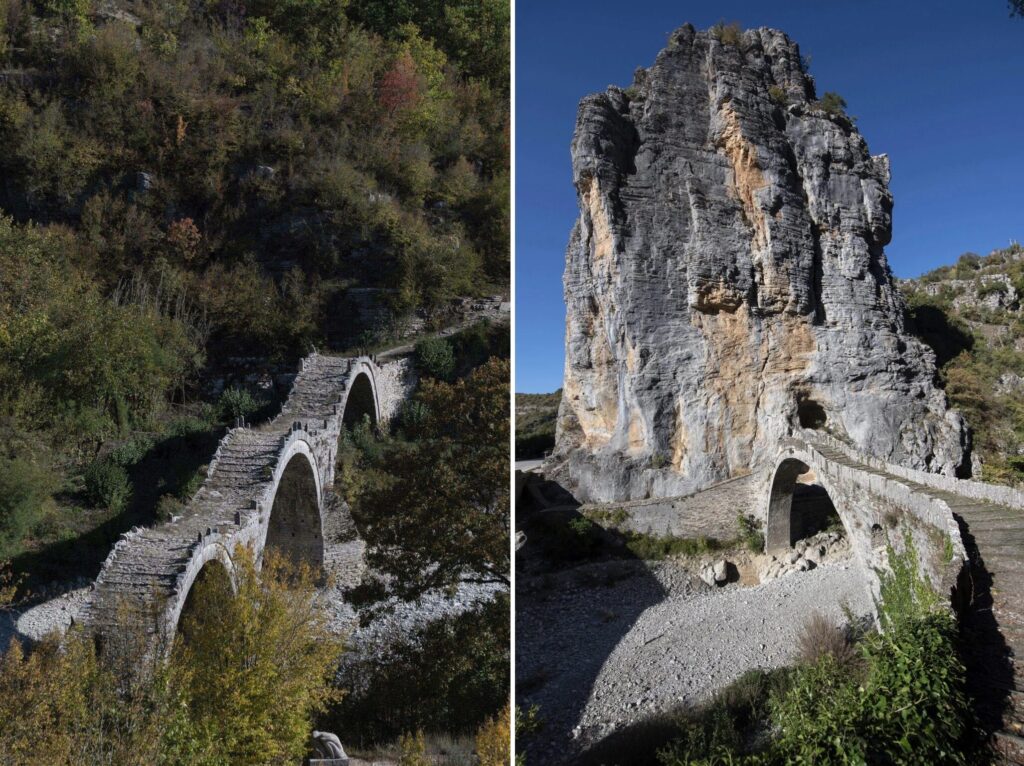
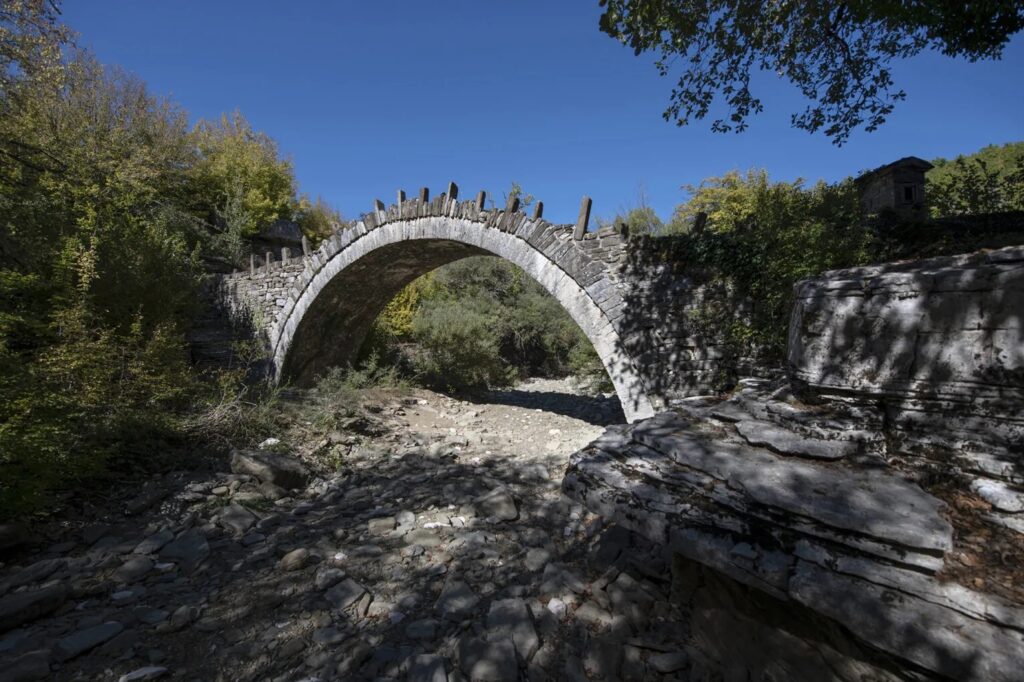
One thing is for sure: the triple-arched bridge is an elegant and well-proportioned work of art. We urge you to take a stroll along its successive curves. From Kalogeriko, you can see Kipoi in the valley below, with another stone bridge, the Kontodimos, at its entrance.
But between the area’s two most famous bridges – Kokkoros, near Davelis Cave, and Plakidas – lie the picturesque Captain Arkouda Bridge and the tiny Agios Minas Bridge, near a small chapel. Bridges, it seems, are a hallmark of Epirote craftsmanship.
Kalogeriko Bridge is one of the most photographed spots in Zagori, and its proximity to Kipoi plays a big part in this. Kipoi is one of the 46 villages in Zagori that have experienced a gentle wave of tourism, becoming a popular mountain destination for those who want to spend quality time in nature.
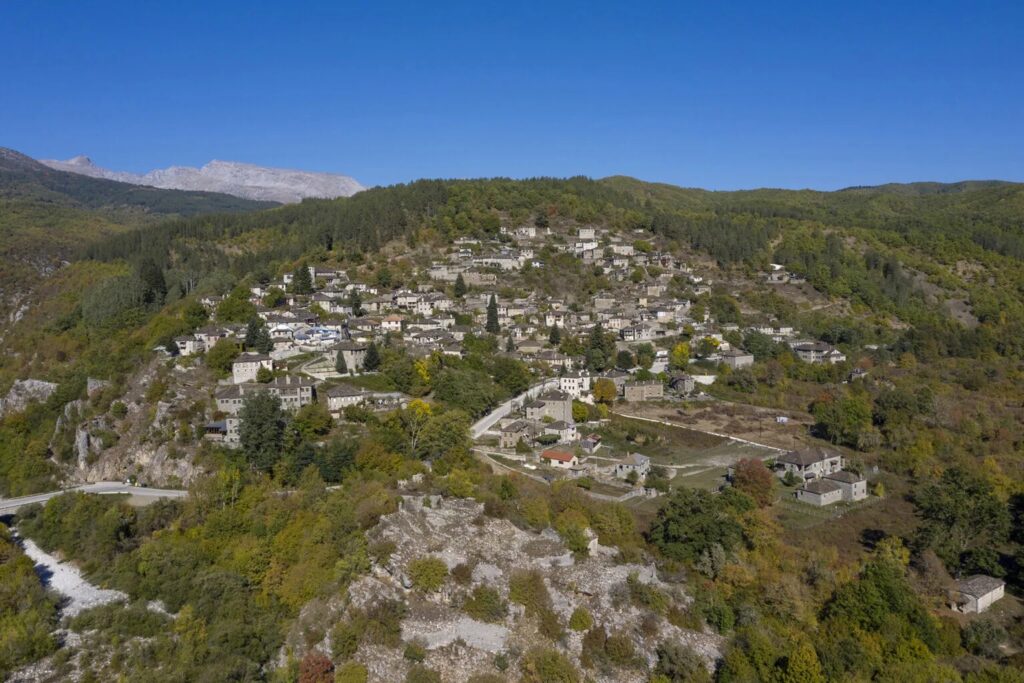
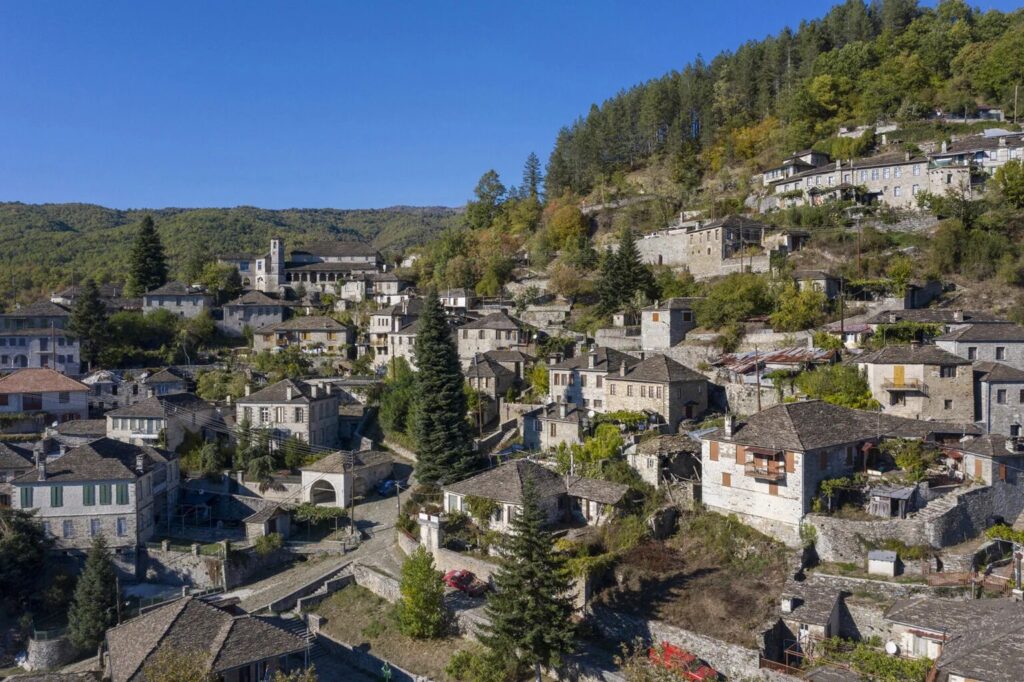
Tips for Your Stay in Zagori
Kipoi is 450 kilometres from Athens, 270 kilometres from Thessaloniki and 37 kilometres from Ioannina. There are about 60 bridges in Zagori in various states of repair.
The best time to visit Zagori is in spring and early summer when nature is most beautiful, the alpine lakes are complete, and activities such as rafting on the Voidomatis River are available.
The region is ideal for hiking, another reason to visit during milder weather.
Given the distance from Athens, you’ll probably need at least a three-day trip to enjoy Zagori fully.
READ MORE: Grevena, the authentic town with mountain beauty that fascinates.

